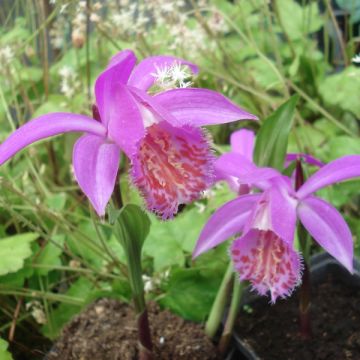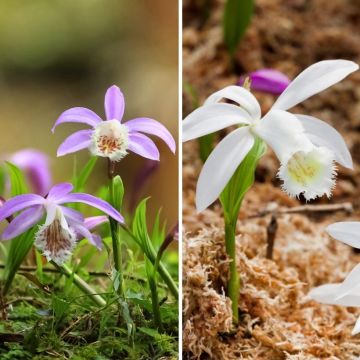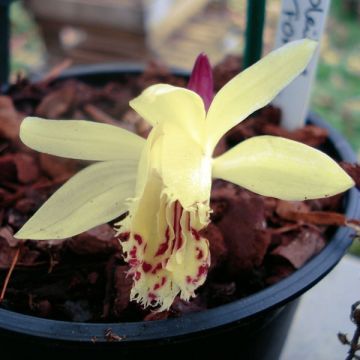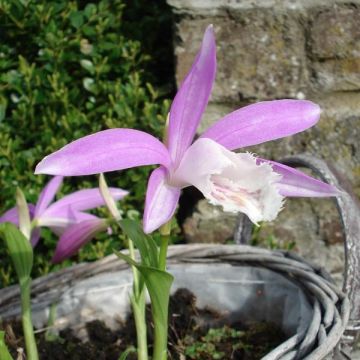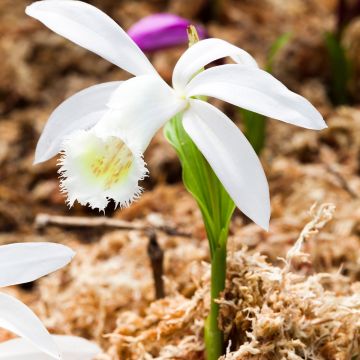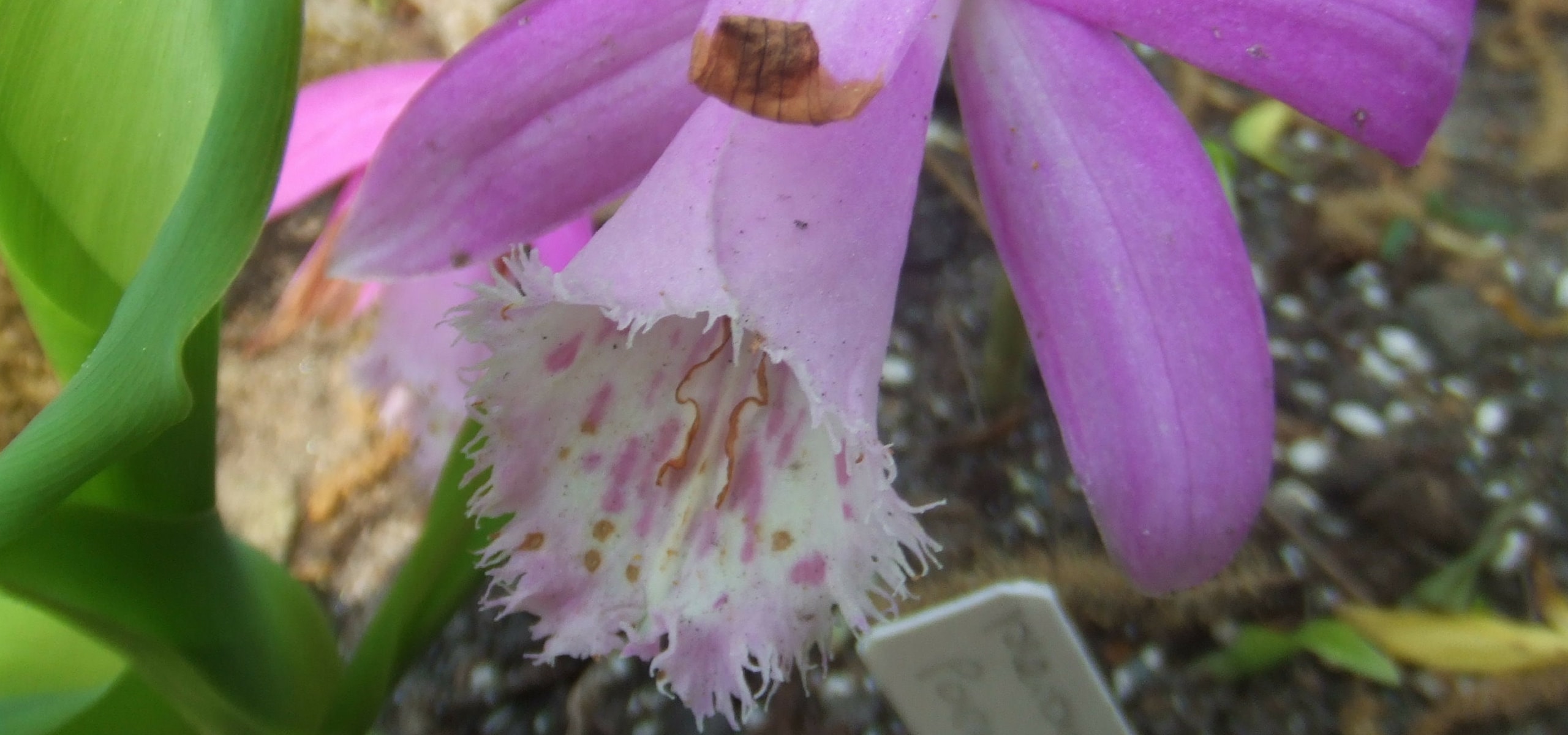
Planting bulbs of Pleiones
Stunning perennial orchids for the garden
Contents
Pleiones are beautiful terrestrial orchids native to Asia, valued for their delicate and colourful flowers that resemble miniature tropical orchids. They are perfect for enthusiasts of rare and elegant plants, and can be grown in pots or in the ground, depending on the climate and preferences. Their flowers, often in shades of pink, white, or yellow, appear in spring or autumn, depending on the species. Let’s quickly discover how to plant pleiones in the ground or in pots!
→ To learn more about growing these garden orchids, read Pleiones: planting, growing, and caring for.
→ Discover our range of hardy orchids for the garden from our online nursery.
When to plant pleione bulbs?
The ideal time to plant pleiones is at the end of winter or very early spring, typically between February and April. During this period, the bulbs are in dormancy, making them less sensitive to the stress of repotting or transplanting. It is important to plant them before the start of their active growth.
Where to plant pleiones?
Pleiones are plants that thrive in cool, bright locations, but without direct sunlight. They flourish in shaded or semi-shaded conditions. In open ground, they prefer a spot protected from cold winds and severe frosts. In pots, choose a bright location that is sheltered from direct sunlight, such as a shaded terrace, a cool greenhouse, or a conservatory.
- In open ground: pleiones can be planted in open ground in regions with mild winters (hardiness zone 7 to 9). If you are in a colder region, it will be necessary to protect them in winter with a thick mulch, or to dig them up for storage in a sheltered place during the cold season. Plant your pleiones in soil that is not too chalky, humus-bearing, cool, light, and well-drained, in a semi-shaded position.
- In pots: pleiones grow very well in pots, which allows for better control of growing conditions, particularly protection against the cold. A mix of potting soil (for sowing or orchids) and pumice with good drainage will ensure a beautiful flowering.
Discover other Pleione
View all →Available in 2 sizes
Available in 0 sizes
Available in 1 sizes
Available in 1 sizes
Available in 1 sizes
How to plant pleiones?
Planting in Open Ground
- Soil Preparation: Pleiones prefer well-drained soil rich in organic matter. You can create a mix of garden soil, light potting compost, and coarse sand. The soil should remain slightly moist, but never waterlogged to prevent bulb rot.
- Bulb Arrangement: Plant the bulbs about 5 cm deep, with the eye (the pointed part) facing upwards. Space each bulb 10 to 15 cm apart to allow for good aeration.
- Watering: Water lightly after planting to help settle the bulbs, but avoid over-watering to prevent excess moisture.
Pot Planting
- Pot Selection: Choose a shallow pot, but wide enough to accommodate several bulbs. The pot should have drainage holes to prevent water accumulation. “Bonsai” pots are perfect for growing pleiones.
- Substrate: Use a mix of light potting compost (sowing compost, for example), coarse sand, and perlite or pumice. Drainage is essential!
- Bulb Arrangement: Place the bulbs 2 to 3 cm deep, always with the eye facing upwards. In pots, it is possible to group several bulbs for a more spectacular effect during flowering, ensuring to space them slightly.
- Watering: As with open ground, water lightly after planting, then wait for the first shoots to appear before resuming more regular watering.
Caring for your orchids after planting
- Watering: once growth has started, pleiones should be watered regularly, but always allowing the substrate to dry slightly between waterings. They are sensitive to excess water, which can cause rot. In winter, during their dormancy period, significantly reduce watering, or even stop it completely if the bulbs are kept dry.
- Fertiliser: during the active growth period (spring-summer), apply a liquid flower fertiliser every 2 to 3 weeks, especially for potted plants. Gradually reduce applications in autumn before stopping completely in winter.
- Cold protection: if pleiones are grown in the ground in a frost-prone area, consider mulching them heavily in autumn. For potted plants, bring them indoors to a sheltered location (such as a greenhouse or garage) to protect them from winter frosts.
- Repotting: pleiones should be repotted every 2 to 3 years, ideally at the beginning of their dormancy period. Take the opportunity to divide the bulbs if necessary.
- Subscribe!
- Contents































